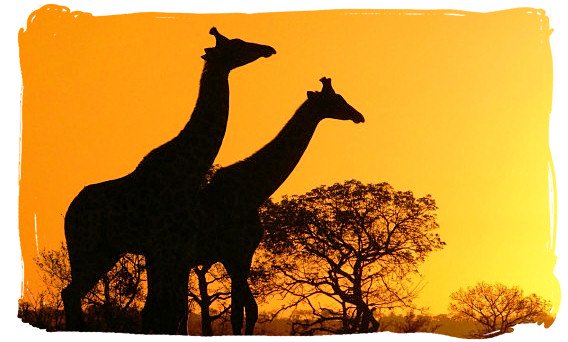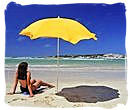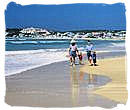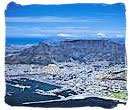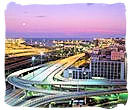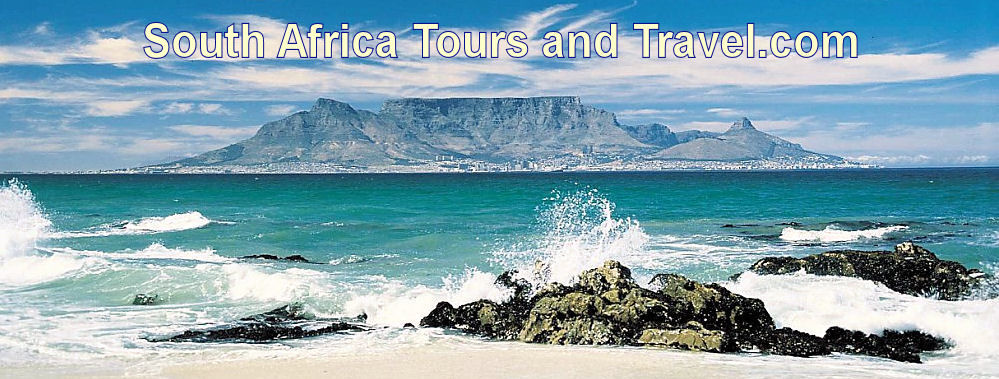 |
||||||||||||||||||||||||||
Marakele National Park in South Africa, |
||||||||||||||||||||||||||
| 1 Mapungubwe | 6 Augrabies Falls | 11 Karoo | 16 Bontebok |
| 2 Marakele | 7 Mokala | 12 Camdeboo | 17 Wilderness |
| 3 Kruger | 8 Golden Gate | 13 Mountain Zebra | 18 Knysna |
| 4 Kgalagadi | 9 Namaqua | 14 Table Mountain | 19 Tsitsikamma |
| 5 /Ai-/Ais/Richtersveld | 10 Tankwa | 15 Agulhas | 20 Garden Route |
| 21 Addo Elephant | 22 West Coast | 23 iSimangaliso Wetlands |
- Use the plus/minus button in the left-hand bottom corner or the the scroll wheel of your mouse to zoom in and out.
- Alternatively, put the mouse cursor on any location on the map that you want to explore and click repeatedly with the left hand mouse button to zoom in or out, without moving the mouse.
- Moving the mouse cursor on the map with the left hand mouse button clicked in, will allow you to move the map up and down and left and right.
- The button on the left in the title bar at the top will take you to a satellite view of the map
- The button on the far right in the title bar will take you to a larger map
- Click on the refresh button of your browser to return to the original map.
- Use the plus/minus button in the left-hand bottom corner or the the scroll wheel of your mouse to zoom in and out.
- Alternatively, put the mouse cursor on any location on the map that you want to explore and click repeatedly with the left hand mouse button to zoom in or out, without moving the mouse.
- Moving the mouse cursor on the map with the left hand mouse button clicked in, will allow you to move the map up and down and left and right.
- The button on the left in the title bar at the top will take you to a satellite view of the map
- The button on the far right in the title bar will take you to a larger map
- Click on the refresh button of your browser to return to the original map.
It lies within comfortable reach of Johannesburg and Pretoria, a distance of 250 km. the GPS coördinates are S 24º31.860' and E 027º29.896'.
BIRDING,...
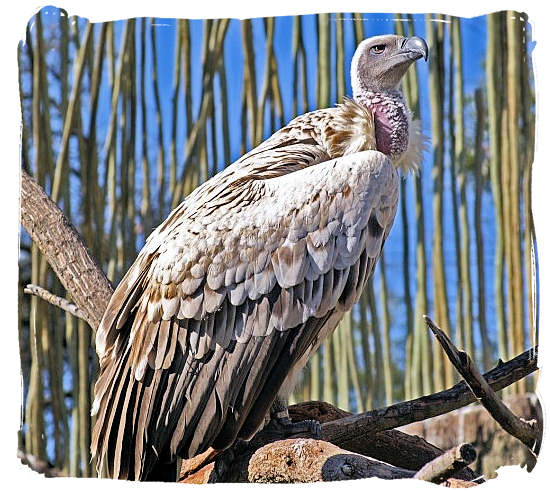
The endangered Cape Vulture (Gyps coprotheres)
Marakele Park in South Africa
The birding enthusiast will find Marakele National Park a true birder’s paradise, with an amazing variety of bird species. Topping the list is probably the Park’s biggest birding attraction, 800 breeding pairs of the endangered Cape Vultures, the world’s largest colony of cape Vultures.
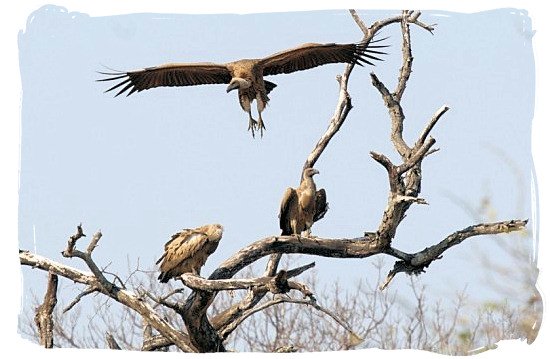
Colony of the endangered Cape Vultures
Marakele National Park in South Africa
You can watch these great birds high up in the African sky anywhere in the Park, gliding from one air thermal to the next, always on the lookout for food. Apart from the vultures, the park is also an excellent place to look for raptors, with many species using the uplift generated off the cliff faces of the Waterberg to ride thermals.
You should look for African Harrier Hawk (Gymnogene), Jackal Buzzard and several eagle species, including Verreaux’s (Black), African Hawk, Black-chested (breasted) Snake and Brown Snake Eagle.
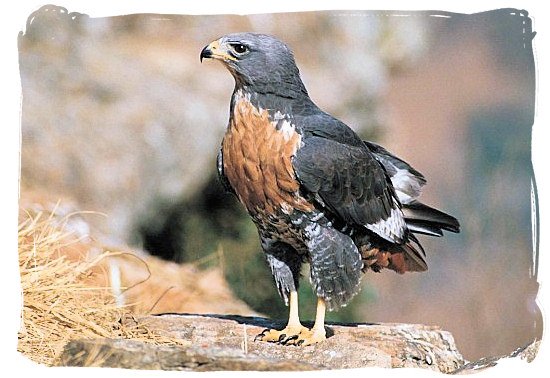
The Jackal Buzzard
Marakele Park in South Africa - copyright © South African Tourism
You will spot many more bird species in the Park, such as the Cape rock thrush, Mountain chat, greater Double-collared sunbird, Mocking chat and Swee waxbill on the high grounds. In low bushveld and woodlands you are likely to see the Purple roller, Brubru, White helmetshrike, Black cuckooshrike, Whitecrowned shrike, Blackcheeked waxbills and Blue waxbills, to name but a few.
VEGETATION,...
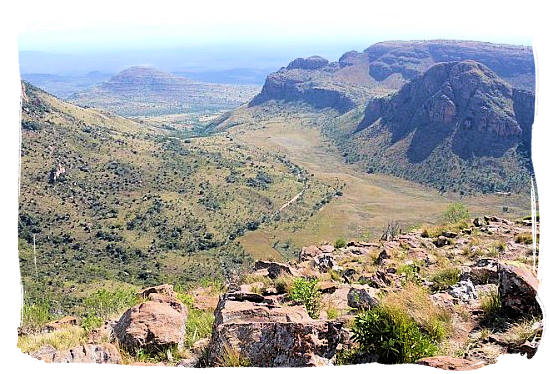
Beautiful mountain scenery inside marakele Park in South Africa
The natural beauty of the landscape in the Marakele National Park is awesome, from low-lying plains covered with bushes and trees and grassy wetlands, to aloe-covered slopes, wooded canyons, towering sandstone cliffs and the windswept grass plateaus of the Waterberg mountains.
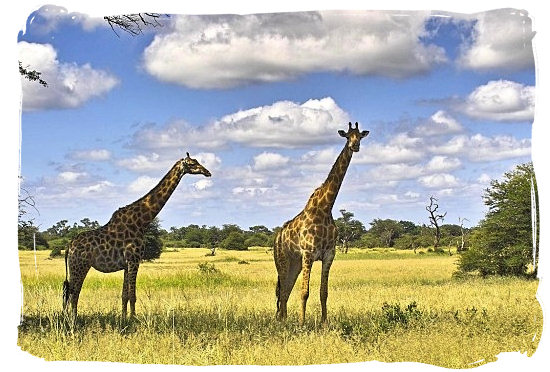
The beauty of the South African Savannah
Marakele Park in South Africa - copyright © Arno en Louise Meintjes
The Park is home to 765 different plant species, including some rare and Yellow-Wood and Cedar tree species. Another rarity in the Park is the Waterberg Cycad (Waterbergbroodboom in the Afrikaans language). It is endemic to the Waterberg region and grows up to 5 meters tall at an altitude of 1450 meters.
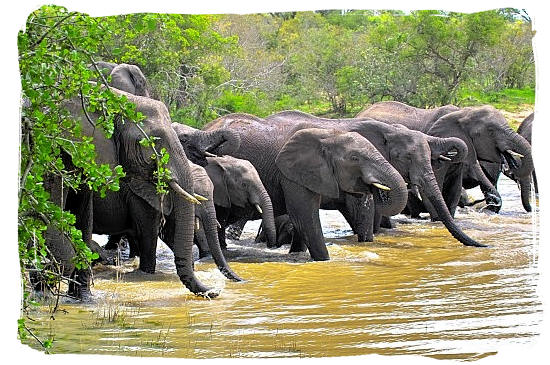
Herd of Elephants drinking their fill
Marakele National Park in South Africa - copyright © Arno en Louise Meintjes
There are two types of bushveld vegetation that are dominant in the Marakele National Park. The one is the Waterberg Moist Bushveld vegetation type which covers 55 % of the Park. It is found in the high lying areas in the southern and south-eastern parts of the Park.
This vegetation type is characterized by Transvaal beech woods (Faurea salinga), proteas (Protea caffra) and stem fruit trees (Englerophytum magaliesmontanum). The vegetation along the tarred road leading to the towers are typical of this type.
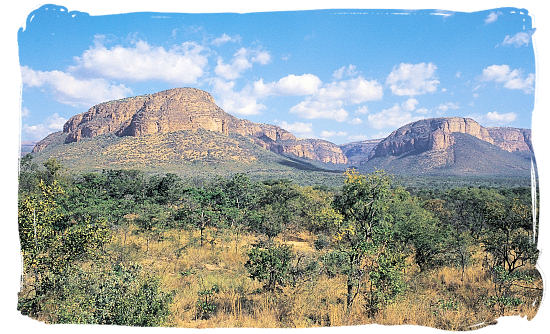
Part of the Waterberg mountain range
Marakele Park in South Africa - copyright © SanParks
The other one is the Mixed Bushveld vegetation type, covering approximately 42% of the Park. This type of vegetation is mainly found in the north-western and south-eastern parts of the Park.
This vegetation type is characterized by species such as silver cluster leaf (Terminalia sericea), sickle bush (Dichrostachys cinerea) and round-leaved teak (Pterocarpus rotundifolias). The vegetation around the camping site and tented camp is typical example of this type.
WILDLIFE,...
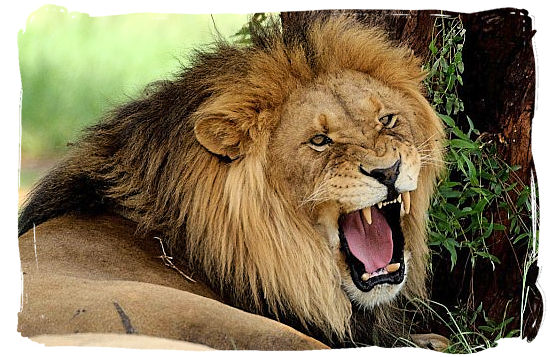
A Lion male, certainly not the friendliest one around
Marakele National Park in South Africa - copyright © Arno en Louise Meintjes
The Greater Marakele National Park is made up of two sections, the Marakele National Park run by the South African Parks Board (SANparks), and the privately owned Marakele Park. Situated on a habitat transitional zone the Park is boasting a very diverse wildlife and great game-viewing opportunities. It is home to most of the large and small animals one would expect to find in the African bush, including the Big 5.
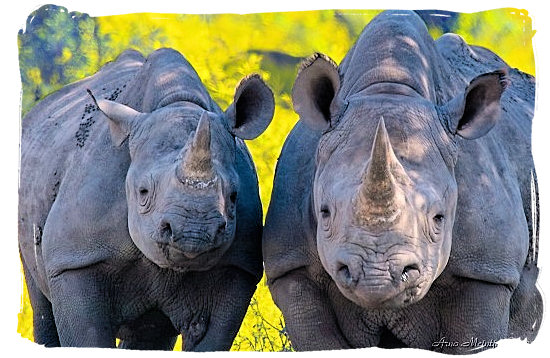
Pair of Black Rhino being curious
Marakele Park in South Africa - copyright © Arno en Louise Meintjes
Amongst the large animals inhabiting the park are Elephants, Rhinoceros (both black and white), Buffalo, Giraffe, Eland, Hippopotamus, including large predators such as the Brown Hyena, Leopard and Lion. The resident antelope species include Sable, Kudu, Waterbuck, Eland, Impala, Tsessebe and many smaller species.
Videos,...
Top of Page
